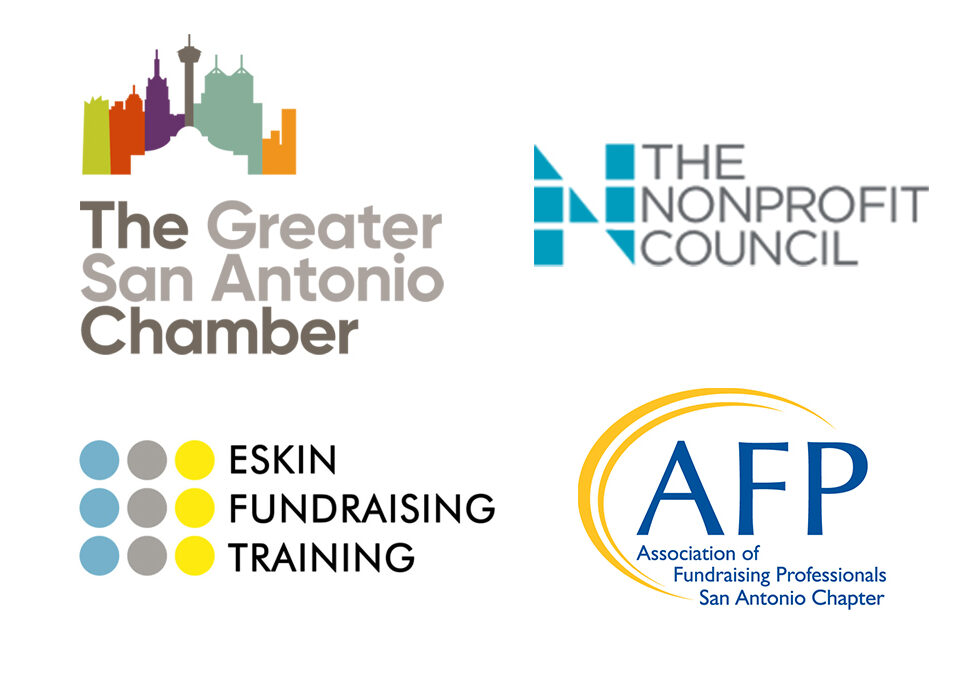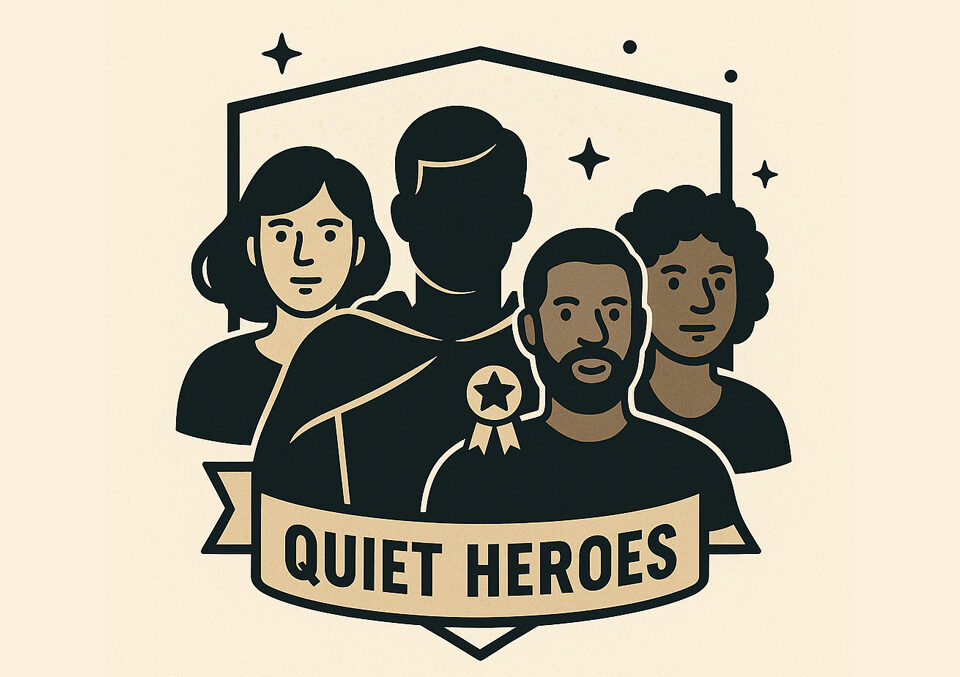
Major Gifts Asking vs. Major Gifts Getting is Jim Eskin’s take on the big monies charities are leaving on the table. Here’s what the founder of Eskin Fundraising Training has to share:
There are more than 1.5 million non-profits in the U.S. They all are virtuous. They are all fueled by inspiring professionals and volunteers who are devoted to championing their respective noble missions that touch, improve and save more lives. This puts donors in a difficult position of choosing not between the good and the bad, but between the good and the good and having to make tough decisions on what to do with finite resources of their time and money.
Similarities and Differences
These non-profits share many admirable characteristics, but they also differ in important ways, particularly when it comes to developing resources so that they can more robustly advance good works.
More and more organizations are fully committing to pro-active fundraising principles, strategies and best practices. Without fear, anxiety nor hesitation they unabashedly ask intentionally for support, and enjoy resource development success. This includes a broad cross-section of higher education and medical institutions among many other non-profit leaders.
They stand above others because their fundamental fundraising culture is one of asking vs. getting. The two should not be confused. In a getting culture, the non-profit passively receives a gift that is entirely determined by the donor when it comes to amount, purpose and timing. Drastically different and more lucrative is the asking culture in which the non-profit strategically influences the outcome by proposing a specific amount, purpose and timing. They are not greedy. Instead, they enthusiastically and personally develop the resources that their noble missions, programs, staff, and especially beneficiaries, richly deserve.
Asking is Much More Strategic
As a fundraising consultant/trainer I’ve worked with many organizations that reflect both cultures — getting and asking. Now, there is nothing wrong with passively receiving gifts from individuals, corporations and foundations. It sure beats no money at all. But a getting culture deprives the non-profit of its promise and potential. I am surprised and disappointed by how many non-profits fall in the getting category.
Major Gifts Asking vs. Major Gifts Getting
I strongly advocate that non-profits draw a line in the sand and transition from getting to asking. This is in keeping with the principles, strategies and best practices of high-performing non-profits. Here are my 12 recommendations on making this important journey from a getting to asking culture.
- It starts with leadership. Board members must lead by example and be actively challenged — if not required — to make an annual financial gift commensurate with their ability and capacity. Typically, boards come up with a suggested gift amount that individual board members can accept or give more or less than it. While the amount might vary from board member to board member, the overarching goal is 100% participation from board members in annual giving. They are asked privately by the Board Chair, Development Chair and/or Executive Director. This is a great way to teach board members what a genuine solicitation is like. It is far different and more productive than making a rushed announcement at the end of a meeting that everyone consider making a gift.
- Board members are actively challenged to commit to all three gifts of time, talent and treasure. Typically, these commitments come together or all three are avoided. Time alone doesn’t cut it. I like asking Board members to sign a one-page document committing to their annual gifts of time, talent and treasure. While not legally binding, when signing the proposed document, board members recognize fiduciary responsibilities to the financial health and growth of the non-profit. Signing such a document prevents board members from claiming they were not fully aware of expectations.
- By committing to personal gifts of time, talent and treasure, each board member is in a much stronger position to help solicit support from others in the community. Each board member should pledge to break the ice and introduce at least one, or ideally two or three, prospects from their personal, business and civic networks to the mission and essential work accomplished by the non-profit.
- We fully recognize that most people, even when fiercely devoted to the mission, are reluctant, if not terrified, of asking people they know for gifts for a favorite cause. Our rationale recognizes that not all board members are suited or even should make financial asks. That is okay. They can play active roles in the discovery, cultivation and stewardship of donor prospects. They can leave the solicitation to the Executive Director, Director of Development, Board Chair, Development Chair and other members of the board who are comfortable with asking. But each board member must demonstrate initiative in breaking the ice and introducing personal contacts to the organization and building the donor base.
- A great way to begin to indoctrinate reluctant board members to the fundraising process is simply to have them make thank you calls to current donors. There is no other agenda to the phone call than thanking the donor. We realize we live in a world of voice-mail messages, and if these calls simply result in voice messages being left to donors, they still have a strong impact. In fact, Penelope Burke, one of the fundraising world’s most respected researchers, calls these at-random thank you calls one of the most impactful ways boards can use their time and lead to gift increases.
Necessity of Asking for Specific Amounts
- Prospects must be individually evaluated and rated for specific amounts. This applies both to current donors and prospective donors. So, everyone is going to be asked to consider a specific amount. Current donors should be asked to increase their gift amounts. There is no place for open-ended asks. We live in a price tag driven society in which everything has a price or cost, and philanthropy should not be treated any differently. The rating process is part science and part art, and admittedly, often educated guesses enriched by members of the non-profit who know the prospects. Asking for a specific amount is at the very heart of a genuine solicitation
- Specific cultivation and stewardship practices should be delineated as effective ways to introduce or remind donor prospects of the results being accomplished with gift dollars. There can be a broad range of such activities including tours, site visits, and observing programs in action and the way they assist beneficiaries. Think of it this way: Everything that happens in the life of the non-profit is a potential cultivation or stewardship activity. Of course, these also include meetings with board leadership and senior management.
- Concrete fundraising goals should be set for specific constituencies, starting with the board. Other stakeholder goals can include individuals who embrace the mission, businesses, foundations, employees, loved ones of those being provided assistance and others.
- Again, most people are afraid of asking. For this reason, there is no substitute for donor research, preparation, rehearsing and practicing the ask. Role-playing can even be highlighted during board meetings. It really isn’t all that complicated. The non-profit representatives briefly tell their missions and impact stories, ask for a specific amount and for a specific purpose to be paid by a specific time. And after the ask is made, they remain absolutely silent until the donor prospects have a chance to respond. The main reason so many non-profit leaders are afraid of asking is that they have not experienced a genuine solicitation themselves, so this is a fear of the unknown.
CIA Prospect Identification
- Who should be asked? I like to use what I call the “CIA prospect identification system”: C= capacity, I=Inclination and A=access. Let’s take a closer look at each of these components.
 Capacity: This is the factor that comes to mind first for most people. It centers on the financial ability to make a gift, driven by income and wealth. Over and over, I see non-profit ears perk up when hearing that so-and-so has a lot of money. Of course, there can be several significant nuances to this information, such as liquidity, financial commitments, and pressures. Just because someone is wealthy doesn’t mean they’re going to give to you.
Capacity: This is the factor that comes to mind first for most people. It centers on the financial ability to make a gift, driven by income and wealth. Over and over, I see non-profit ears perk up when hearing that so-and-so has a lot of money. Of course, there can be several significant nuances to this information, such as liquidity, financial commitments, and pressures. Just because someone is wealthy doesn’t mean they’re going to give to you.
Inclination: This begins the process of digging deeper. If the donor prospect is wealthy, do you know if they are philanthropic and have demonstrated that they do donate to charitable causes? And, if they are philanthropic, why do we believe they care about our cause? There should be some rationale to conclude that they have a genuine connection to the mission or could be cultivated to develop such an interest.
Access: Even if you can establish capacity and inclination, the final — and biggest challenge — is figuring out how we are going to be able to get to the donor prospect. The bigger the donor, the tougher the challenge usually is. The Six Degrees of Separation reminds us that everyone on the planet is separated by no more than six personal relationships. In many communities like San Antonio, this is more like two degrees of separation, and board members and volunteers can and should facilitate access and open doors.
- The donor pipeline is organic and should be continuously updated with leads deleted or added as circumstances call for. A rule of thumb is: There should be four prospects for every gift you want to obtain.
- The Executive Director, Director of Development and/or Development Committee can monitor progress, or what we call “moves management,” to track and give visibility to prospects and ensure that they move forward in the fundraising processes.
In Closing …
Adoption of these dozen measures and other best practices in the same spirit will provide an exclamation point as the non-profit purposely and thoughtfully transitions from a getting to asking culture. True, it might require a shift in attitudes, courage and steady reinforcement to move all board members forward in this journey. Some board members may choose not to make commitments, and that is their choice. Serving on the board means providing concrete leadership in the commitment to perpetuate and empower the mission, vision and values of the organization.
 Jim Eskin’s consulting practice, Eskin Fundraising Training builds on the success of his more than 150 fundraising workshops and webinars and provides the training, coaching and support services that nonprofits need to compete for and secure major gifts. He has authored 100 guest columns that have appeared in daily newspapers, business journals and blogs across the country, and publishes Stratagems, a monthly e-newsletter exploring timely issues and trends in philanthropy. Sign up here for a free subscription. He is author of 10 Simple Fundraising Lessons, which can be purchased here.
Jim Eskin’s consulting practice, Eskin Fundraising Training builds on the success of his more than 150 fundraising workshops and webinars and provides the training, coaching and support services that nonprofits need to compete for and secure major gifts. He has authored 100 guest columns that have appeared in daily newspapers, business journals and blogs across the country, and publishes Stratagems, a monthly e-newsletter exploring timely issues and trends in philanthropy. Sign up here for a free subscription. He is author of 10 Simple Fundraising Lessons, which can be purchased here.
Eskin Fundraising Training
10410 Pelican Oak Drive
San Antonio, TX 78254-6727
Cell: 210.415.3748
E-Mail: jeskin@aol.com
Major Gifts Asking vs. Major Gifts Getting was first posted at National Development Institute
For more articles like Major Gifts Asking vs. Major Gifts Getting VISIT HERE


